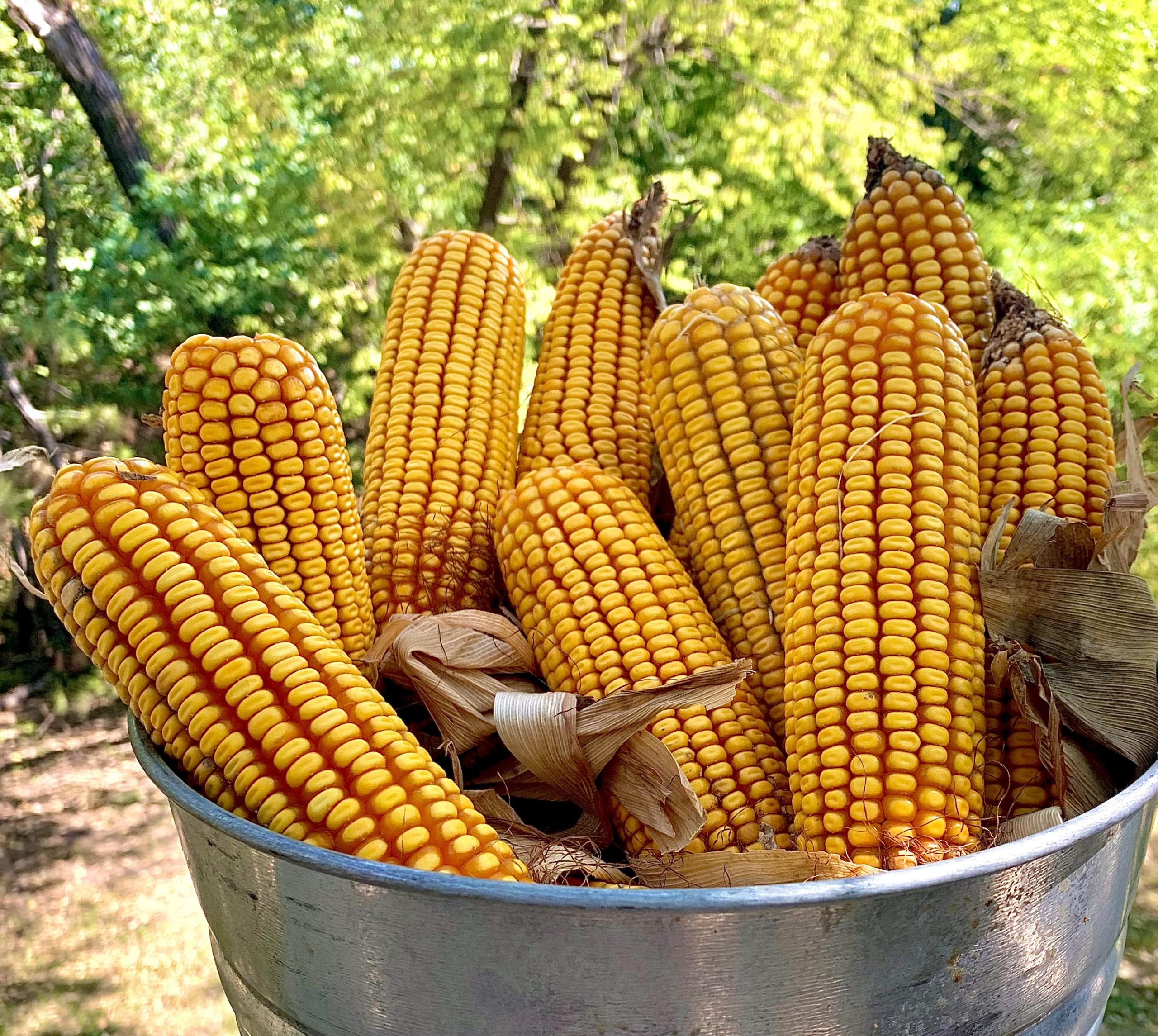Early yield prospects are promising for farmer Dan Schmidt’s fall harvest in Marshall County, Kansas.
Potentially lower income, however, has robbed him of some of the fun.
“It’s sure better yields, but I don’t know if it’s leaps and bounds better,” he said.
A dryland corn producer who farms with his wife, Kim Schmidt, and father-in-law, Dave Stump, Dan said average yields are typically 150 bushels to the acre. In the photo above, a pail of irrigated corn from a north-central Kansas field, should produce a pleasing yield, but the price is so far disappointing. (Journal photo by Tim Unruh.)
“I’m hoping we’re going to be 10 to 15 bushels north of that,” he said.
Unfortunately for Schmidt and many others, the better crop won’t make up for lower prices.
“Hindsight’s 20-20. I wish we would have forward contracted more,” he said.
Some of this year’s corn harvest was locked in at higher prices, said Josh Roe, CEO of Kansas Corn, who farms in Republic and Jewell counties in north-central Kansas.
“I’m probably 70 to 80 cents (a bushel) above what the current markets are,” he said. “When you’re having lower prices, bushels kind of save your bacon.”
While Kansas will end up a bit under a record yield, Roe said there will be some fields and regions with production worth boasting.
Farmers will bin nearly 740 million bushels, up 24% compared to 2023, he said, and dryland corn expectations are up 30 to 40%.
“That’s still not a record, but there’s a safe assumption that yields are better than last year,” Roe said. “In Kansas, 20 miles can make a big difference. There are areas in the state blowing out yields, but at Phillipsburg and into northwest Kansas, they did deal with major hail issues.
“In Iowa and Illinois, they’re harvesting some really good yields. There’s going to be a lot of corn in the U.S.”
Dan O’Brien, K-State Extension agricultural economist in Colby was blunt in his assessment.
“Prices will be low during the harvest season,” he said.
More crop reports are ahead, but the mid-September outlooks showed “strong record yields” of 183 bushels to the acre for United States corn.
“I don’t think we have any argument that we have a large crop. it’s just a matter of how large,” O’Brien said. “The numbers the market is trading on right now are subject to change.”
Something drastic could raise hopes.
“You’d have to have an international problem to get corn prices close to $5 (a bushel) or more,” he said. “You’d probably need to see major production problems in the southern hemisphere like Brazil, or in the Black Sea region, to bring fear into the market. It’s hard to talk about what can happen in terms of geo-political politics.”
Regarding military conflicts across the globe, such as the Hamas/Hezbollah-Israel and Ukraine-Russia wars, O’Brien said, “The market hasn’t panicked over those. They don’t see disruption to trade flows. There was some in the Middle East with the (Houthi movement), but it wasn’t a complete disruption.”
Uncertainty could push prices higher.
“A third factor is low prices are helping to support pretty strong demand for a good number of crops, corn in particular with livestock feeding, ethanol and exports,” he said.
Corn futures are still hovering around $4 a bushel, Roe said, but factors can always change.
“I’m watching South American weather patterns. If they don’t get rain in two or three weeks, there could possibly be some opportunities there,” he said. “It’s gonna take some outside forces.”
Demand for biofuels is “solid in the short term,” Roe said. “We’ve spent a lot of time on ethanol policy, allowing higher blends, and there is a potential to make sustainable jet fuel using ethanol, but I should say it’s not going provide any short-term (price increases).”
Corn harvest is far from over, and a lot could happen as fall unfolds.
“I still have my best fields (left to reap). Hopefully they’ll impress me,” Dan Schmidt said.
He reported on the final day of September that his better corn was turning in yields of 20 to 25 bushels to the acre “better than previous years.”
Schmidt also plans to feed more corn to his family’s cattle because the cattle market is up.
“Out west, they’ve got almost a perfect storm with cheap corn and high-priced cattle,” he said. “That’s the name of the game.”
It’s not all bad, O’Brien said.
“(The market’s) not completely bearish. There are still things you have to watch that end up supportive for prices,” he said. “It allows for much more grain to be used through the fall and winter and will affect planting next season. Low prices will probably hinder or reduce acres for next year.
“It’s like the old economic adage. ‘The best cure for low prices is low prices.’ ”
Tim Unruh can be reached at [email protected].
PRICE MATTERS
The 165-bushel dryland corn yield farmer Dan Schmidt is hoping for this harvest amounts to $668.25 an acre, based on the Sept. 30 market close of $4.05 a bushel posted at Scoular grain terminal in Salina, Kansas.
That same yield at the market close on June 14, 2022, would have fetched $1,242.45 an acre, when the price was at $7.53 a bushel.




